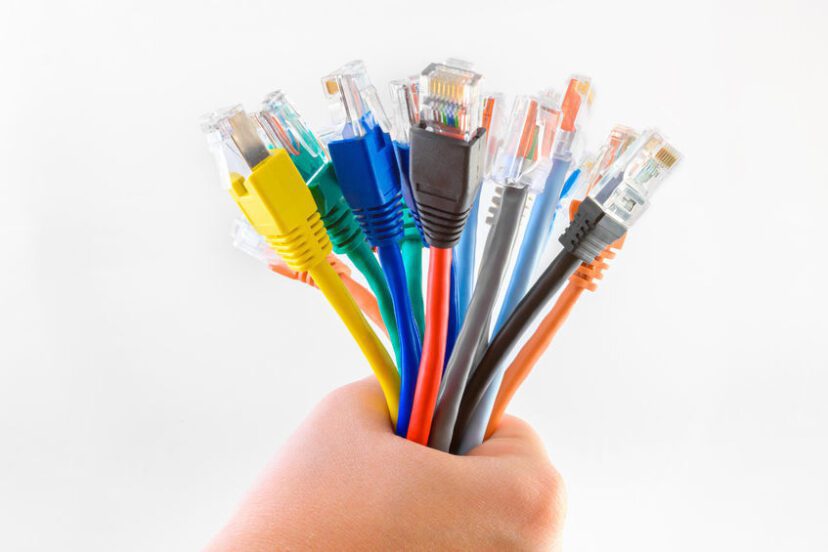Understanding EMF Radiation and Safe Levels for Humans: A Critical Look at the Dangers In today's…
How to Switch to a Hardwired Internet Connection and Turn Off WiFi in Your Home

One of the most effective measures to minimize electromagnetic field (EMF) radiation in a home of office is to turn off WiFi. While this is possible, the devices capable of using WiFi connection also emit their own radiation. Often the wired internet is faster, more secure, and reliable. Most importantly, the people in the home or office have reduced exposure to EMF from a WiFi router.
Before you can run a wired connection, you need to consult an expert for an assessment. The specialist will help in establishing the cable ways and setup of your home or office. Getting a professional is advisable however there are a couple of considerations, it will cost more than doing it yourself and a trained professional will know how best to set up your systems. However if you would like to do it yourself, this article will be an handy reference to get you started.
Getting the Necessary Equipment and Tools
First off, you need to secure some equipment to wire your household. Many internet providers are willing to lease out their modem – however, not every provider. They often add the payment to your monthly bill. The best bet is to shop online for the current modem you have in your system. Some products offer duo functionality: Modem and Router with wireless capability. Such a modem is also okay. The one consideration you need to remember for this project is to find a modem that enables users to turn off the WiFi signal.
The next piece of equipment you will need is the Ethernet switch along with cabling to get the Ethernet to your devices. With the switch, you can link up several internet cables. By so doing, you’ll have multiple wired connections to different devices. Before you start, take a count of the number of devices in your house and the locations where you may or may not want to connect to the network. Your will need a switch with enough ports to handle that load.
One final top on the type of the cables to buy, ensure that it is a shielded cable to reduce EMF emissions. Having an Ethernet cable for each device is not a bad idea but an alternative option is to share one cable with several devices when it is not required to have simultaneous use.
If you want to be extra cautious, you can look into fiber based systems. The cable are fibers and do not emit RF radiation. There is an expense but it is an option to consider if money is not a problem.
Insert Plugs and Run Cables
Once you have all the equipment and cabling time to start get set up. First check your modem and set it up, as explained in the manual. Next verify you are getting an internet connection from your modem, then connect the modem to the Ethernet switch. You can use a short cable and a portable device like a laptop to verify you are getting a network connection through your switch.
Once the switch is verified as active and connected, it is time to run the cable(s) to every room where you need an internet connection. It helps to be handy for this part of the job. For those having multiple levels in their apartment, drilling through ceiling or floor may be required. Alternatively, you can pass the cable along the edge of the carpet at the baseboard and tuck in the cable.
The last step is to install ports in the wall so you can connect your devices with short cables near where you will use your device.
Once last tip on wiring, an ideal time to install cables is to combine this with a remodel. If you are tearing out walls and doing a remodel, plan to add you cabling as part of the remodel.
Connect Your Devices
After getting the cables into the rooms where you want an internet connection, simply plug in the devices. The electronics may be desktop computers, personal laptops, televisions or video game consoles. From EMF viewpoint, you may not use the internet connection on your phone as a desktop computer with a wired connection is safer to search the internet.
If you devices are WiFi capable be sure to locate and turn off WiFi settings on those devices as well. They can be EMF sources that sometimes people for get about.
How to Turn off WiFi on Router
Now all your devices are connected and their WiFi is off, the final piece is to make sure you turn off the WiFi from your router or modem/router combo unit.
Conclusion
Undoubtedly, several benefits come with using wired connection over WiFi. This includes security as nobody can hop on your WiFi and hack your password, but most especially from the standpoint of EMF health risks. You may need some technical knowledge and planning to pull it off, but the reward is knowledge you are safeguarding your family from unnecessary exposure to another source of EMF.



